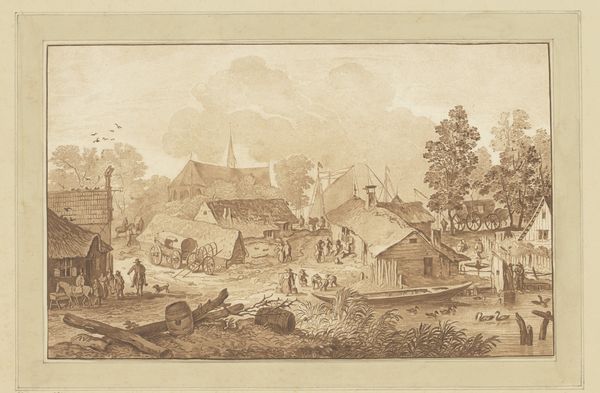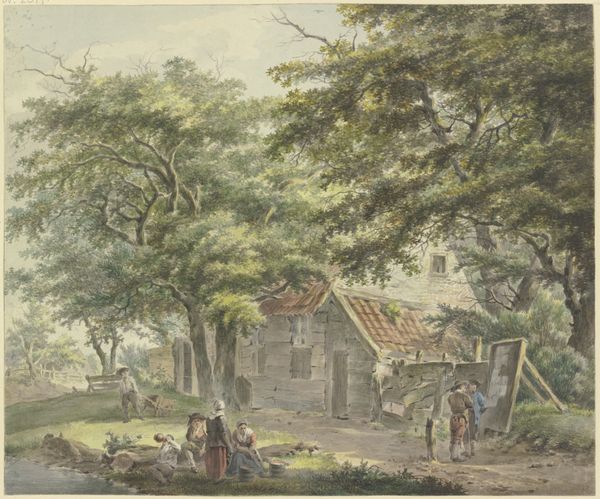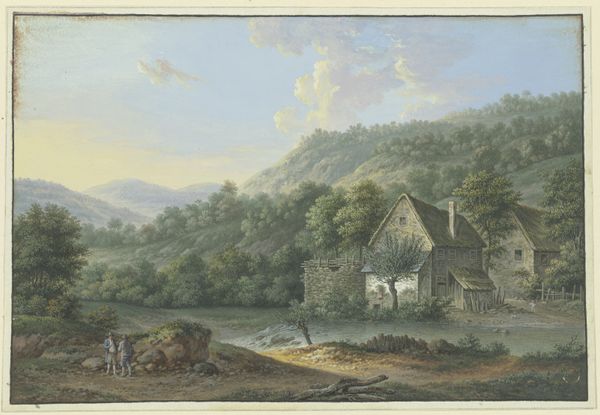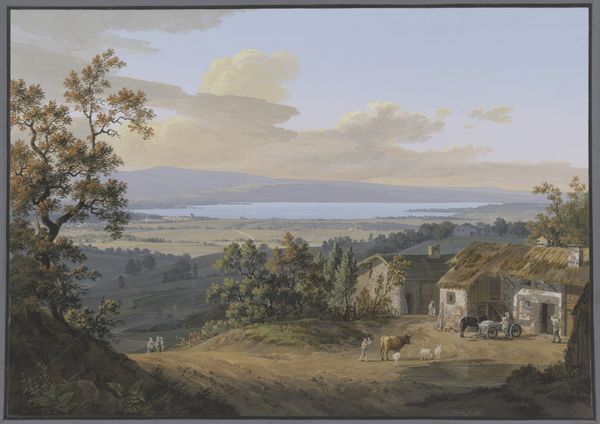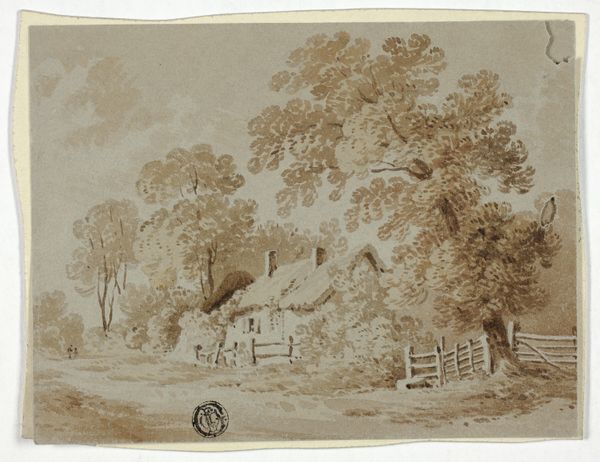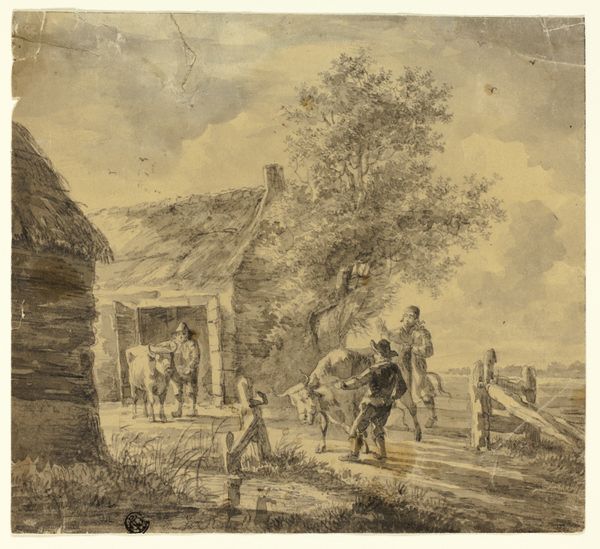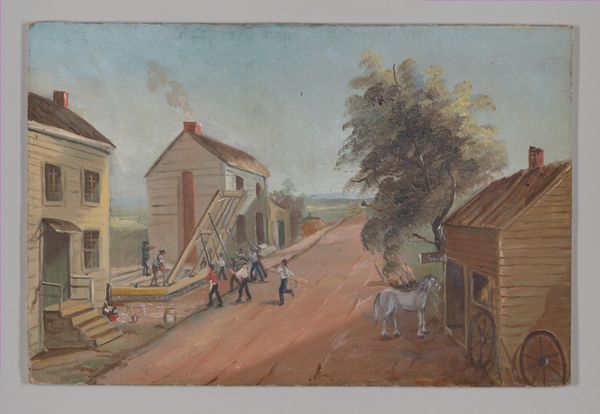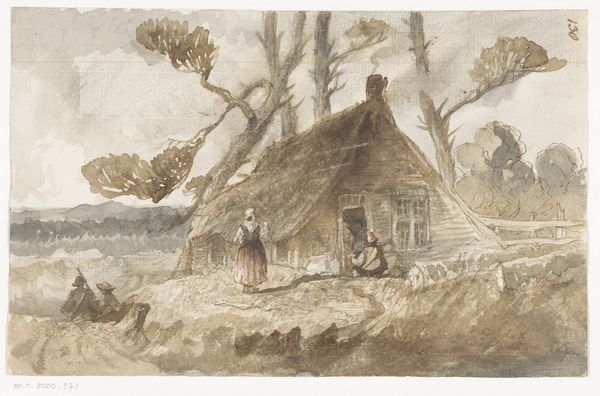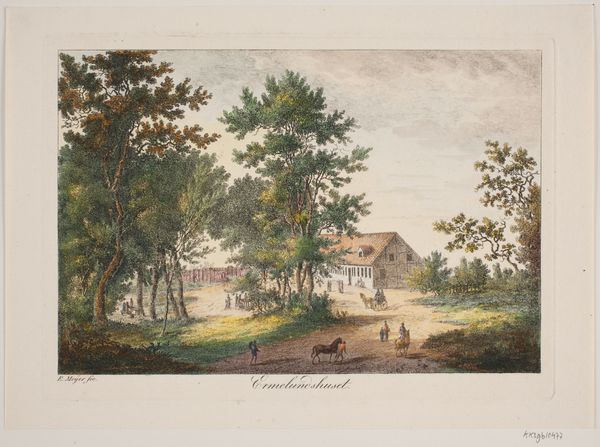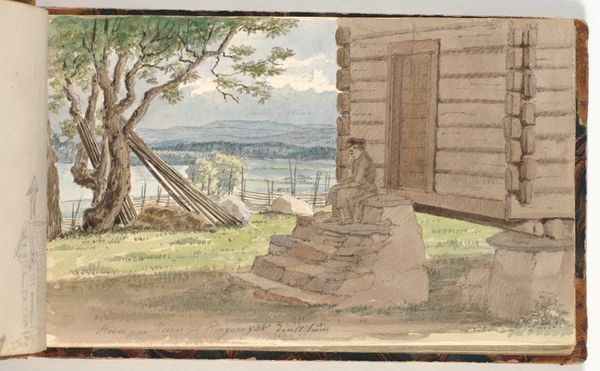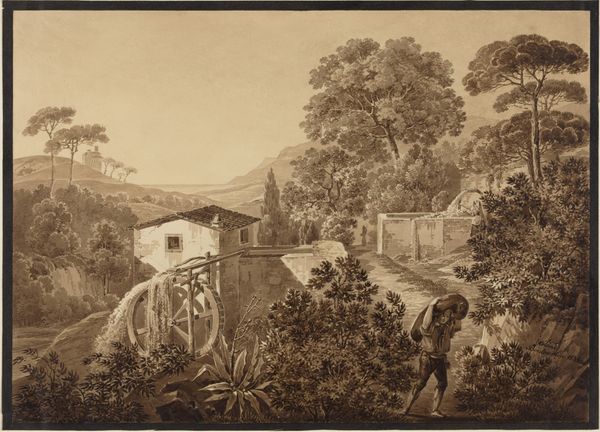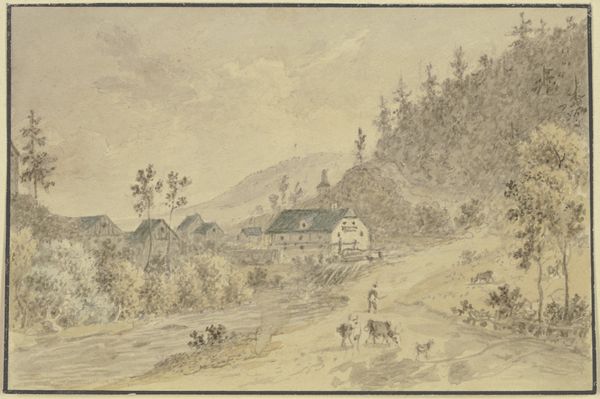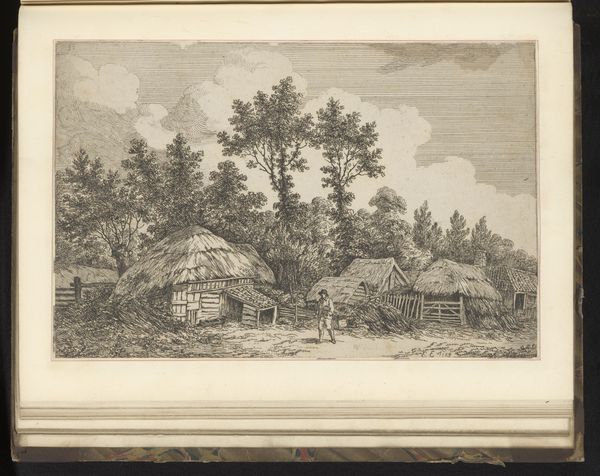
painting, ceramic
#
baroque
#
dutch-golden-age
#
painting
#
landscape
#
ceramic
#
oil painting
#
naive art
#
painting painterly
#
genre-painting
Dimensions: length 22 cm, width 26.5 cm
Copyright: Rijks Museum: Open Domain
Gijsbrecht Verhaast created this plaque sometime in the 18th century. It's a painted scene, seemingly idyllic, and depicts a number of figures outside a modest building. This image presents itself as a slice of everyday life in the Netherlands, but it's important to consider what kind of life is being represented, and for whom. In the Dutch Golden Age, landscape painting wasn't just about pretty scenery; it often carried social and political messages. The presence of the figures and buildings suggests a settled, ordered society, which would have appealed to the rising merchant class of the time. To better understand this plaque, we could look at period maps and census records. These resources might tell us who lived in such houses and how this image fits into broader cultural trends. Ultimately, this plaque offers a snapshot of a specific time and place, shaped by the social conditions of its creation.
Comments
rijksmuseum about 2 years ago
⋮
This little landscape, in highly unusual colours for Delftware, was signed by Gijsbrecht Verhaast. He is one of the few Dutch faience painters known by name, since he regularly signed his work. In 1689 he was employed by Rochus Hoppesteijn at Het Moriaanshooft. He also worked from home on private commissions, despite guild rules that forbade this. It is not known where he produced this plaque.
Join the conversation
Join millions of artists and users on Artera today and experience the ultimate creative platform.
